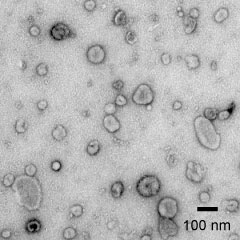Investigators in the US and Canada are reporting on a study where they have exposed individuals with a history of cat-induced asthma to the allergen in a controlled room environment.
Then they have allocated the patients treatments with either placebo or Omalizumab (anti-IgE, market name Xolair), which reduces the binding of IgE to mast cells. A good protective effect could be observed with the anti-IgE therapy, reducing the drop in lung function with close to 50%. Symptoms from the eyes and nose were also overall reduced with the anti-IgE therapy, which reduction in number of sneezes recorded. In a clinical setting, anti-IgE can really reduce allergic symptoms, and it is a pity that it is such a very expensive therapy, varying from USD7000-USD40000 / year (http://www.aafp.org/afp/2005/0115/p341.html). Even though the therapy is effective, it is certainly very difficult to prove cost-effectiveness unless the treated patient has severe allergic asthma with repeated exacerbations.
Blocking IgE can also be used to protect patients against side effects during allergen immunotherapy (allergen vaccination: http://bit.ly/htKUF0). With such approaches, it is possible that immunotherapy could be further enhanced, and could allow more severely allergic individuals to be treated with such approaches. It is also likely that the very allergic individuals would tolerate higher doses of immunotherapy, with possibly greater efficacy. This aspect is further discussed here http://bit.ly/gjWmQ9 .
Omalizumab is a monoclonal antibody, and is obviously expensive to produce, and has been expensive to develop as a therapy. However, if it became less costly, a vast population of allergic individuals would be likely to benefit with this treatment.
http://www.expressen.se/nyheter/dilemmat/1.2322905/dilemmat-del-3-kattallergi

Leave a comment